Trico Poly Wing Spinner
By Skip Morris
Tiny flies are today a solid part of fly fishing. Where once the single-minded feeding
of trout on minuscule mayflies, midges, or caddisflies meant that it was time to break
for lunch - or even quit for the day - many anglers now consider this a time of exacting
and exciting sport.
It is to the benefit of the tier that tiny flies allow less inspection from trout than do
larger flies and therefore can be, and usually are, simple in design and construction.
Here are a few general points regarding the tying of tiny flies that will help make this
a pleasant task. First, a vise with fine jaws (many vises can accept several jaws)
offers good tying access on tiny hooks. Second, scale down your materials in both
size and quantity - use short-fibered peacock herl for tiny flies, and add only three
to (at most) eight turns of hackle to a dry fly of size 20 or smaller, and use almost
no dubbing at all. Third, consider some kind of magnifier . . .as this can make tying
tiny much easier and more pleasant, even for those with good eyesight. Fourth,
although there are special threads for tying tiny, the best I have found for tiny flies,
providing you use as few turns of it as possible, is 8/0. Finally, although special tools
are made for tying tiny flies, I've never found much value in them beyond the matter
of vise jaws, though some tiers like tiny tools for tiny flies. My point is that tiny tools
are optional, so you can start tying tiny with the tools you have.
Beginning each year in mid to late summer, many slow-moving trout streams across
America play host to huge hatching-mating movements of tiny Tricorythodes,
a mayfly of various species, some of which are so small that imitations must be tied on
size 28 hooks. [or 32's.] That "tricos," as they are nicknamed, are usually tiny is
appropriate, because everything about them is unusual - the male trico's tails are
outlandishly long, tricos have no hind wings like most mayflies, and the wings they do
have are, of all things, whitish - whitish!
Tricos hatch in the morning or around midday. Sometimes the dun is important, in which
case any mayfly dun pattern with dark-brown body and light hackle, light tail and, if
you want them, wings, will do fine. But I usually find a preponderance of spinners,
and these I imitate with the Trico Poly Wing Spinner.
Materials: Trico Poly Wing Spinner
Tying Steps:
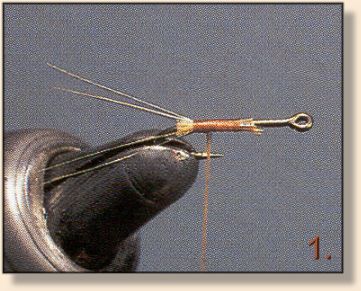
1. Strip, measure, and tie in a bunch of hackle fibers as a split tail.
(This pattern imitates the female trico, so tails should be of standard length.)
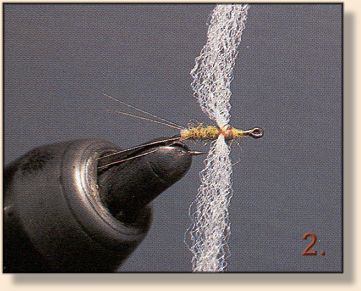
2. Dub a tapered abdomen up two-thirds of the shank. Using the pinch, tie in a
bunch of poly yarn. Pull the yarn out to the sides of the thorax and crisscross
the thread around the yarn at its tie-in point.
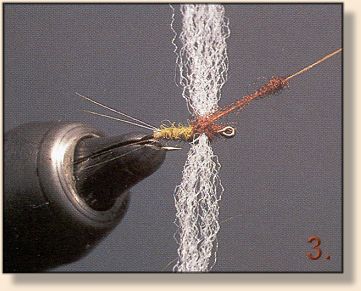
3. Add more crisscrossed thread turns around the wings' base with brown-dubbed
thread. Add some dubbing in front of the wing, and create a thread head.
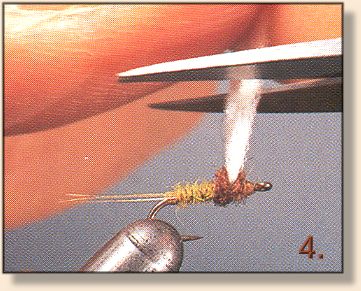
4. Raise and trim the wings as one. Add head cement.
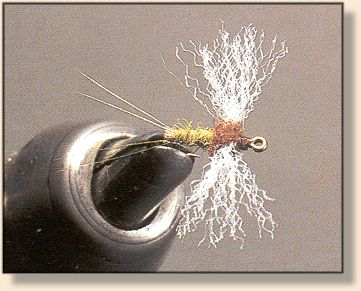
|





